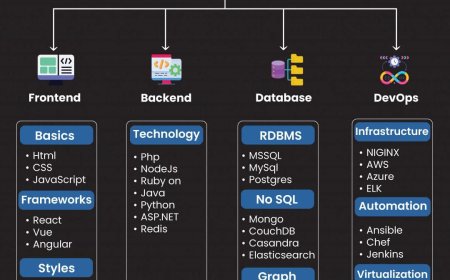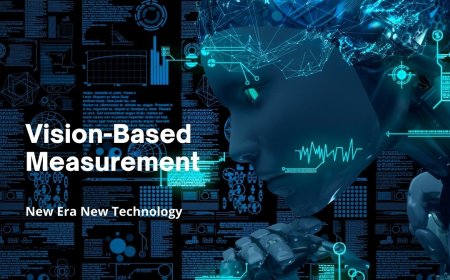What Is an AI Customer Support Voicebot and How Does It Work?
Discover what an AI customer support voicebot is and how it works to automate conversations, resolve queries faster, and improve customer service efficiency.

In an era defined by instant gratification and technological innovation, customer support has undergone a profound transformation. Gone are the days when static, menu-driven Interactive Voice Response (IVR) systems were the pinnacle of automated customer service. Today, businesses are increasingly leveraging sophisticated solutions that can understand, respond, and even anticipate customer needs with remarkable accuracy: the AI-powered customer support voicebot.
This article will delve into what an AI voicebot in customer support truly is, differentiate it from its predecessors, explain the intricate mechanisms behind its operation, highlight its myriad benefits, and glimpse into the future of these intelligent AI Voice Agents.
What Exactly Is an AI-Powered Customer Support Voicebot?
At its core, an AI-powered customer support voicebot is an intelligent software application designed to interact with customers over the phone using natural human-like speech. Unlike traditional IVR systems, which rely on rigid, pre-programmed menus ("Press 1 for sales, Press 2 for support"), an AI voicebot leverages artificial intelligence to understand and respond to spoken language in a conversational manner.
These advanced voicebots are built upon a foundation of cutting-edge AI technologies, primarily Natural Language Processing (NLP) and Machine Learning (ML). This enables them to:
-
Understand intent: Go beyond keywords to grasp the underlying meaning of a customer's query.
-
Engage in dynamic conversations: Respond contextually, ask clarifying questions, and guide the interaction.
-
Provide personalized solutions: Access and utilize customer data to offer tailored assistance.
-
Automate routine tasks: Handle a wide range of common inquiries and transactions without human intervention.
In essence, an AI voicebot aims to emulate the efficiency and understanding of a human agent for common issues, providing 24/7 availability and scaling support far beyond human capabilities.
How Does an AI Voicebot Work? The Underlying Mechanics
The seemingly effortless flow of a conversation with an AI voicebot in customer support masks a complex orchestration of several interconnected AI technologies. Let's break down the typical workflow:
-
Speech-to-Text (STT) Conversion: When a customer speaks, the first step is for the voicebot to convert their spoken words into text. This is achieved through an STT engine. Advanced STT models can accurately transcribe various accents, speaking speeds, and background noises, turning the audio input into a textual representation that the AI can process.
-
Natural Language Processing (NLP) and Understanding (NLU): Once the speech is transcribed into text, the heart of the AI voicebot kicks in: the NLP and NLU engines.
-
NLP focuses on enabling computers to understand, interpret, and generate human language. It involves parsing sentences, identifying parts of speech, and understanding grammatical structures.
-
NLU, a subset of NLP, goes deeper by focusing on comprehending the meaning and intent behind the customer's words. It can identify entities (e.g., product names, account numbers, dates), extract key information, and determine the user's ultimate goal. For example, if a customer says, "I want to change my address," NLU identifies "change address" as the intent and "address" as the entity to be modified. This is where the voicebot differentiates itself from simple keyword matching.
Dialogue Management (DM): The dialogue management component acts as the "brain" of the conversation. Based on the perceived intent from NLU, it determines the appropriate response or action. It keeps track of the conversation's context, remembering previous turns and guiding the interaction forward. If the voicebot needs more information to fulfill an intent (e.g., asking for the new address), the DM formulates and delivers the clarifying question. It ensures a logical and coherent flow to the conversation.
Backend System Integration: For the voicebot to be truly useful, it must interact with a company's internal systems. This includes:
-
Customer Relationship Management (CRM) systems: To access customer history, account details, and previous interactions.
-
Knowledge Bases (KBs): To retrieve answers to frequently asked questions, product information, or troubleshooting guides.
-
Transactional Systems: To perform actions like checking order status, processing payments, updating addresses, or resetting passwords. This integration allows the AI voicebot to not just understand but also act on customer requests.
Text-to-Speech (TTS) Generation: Once the voicebot has formulated its textual response based on dialogue management and backend interactions, it needs to speak it back to the customer. This is done through a Text-to-Speech engine. Modern TTS technologies utilize deep learning to generate highly natural-sounding, human-like voices, often with configurable tones, accents, and even emotional inflections, enhancing the customer experience.
Machine Learning (ML) and Continuous Improvement: A crucial aspect of an AI-powered customer support voicebot is its ability to learn and improve over time. ML algorithms continuously analyze interactions:
-
They identify common queries that the bot struggles with.
-
They learn from successful resolutions.
-
They can flag interactions that need human review (e.g., for complex or emotional issues), and the insights from human agents can then be fed back into the training data to enhance the bot's capabilities. This iterative learning process, often supervised by human trainers, ensures the voicebot becomes more intelligent and efficient with each interaction.
Key Capabilities and Benefits of AI Voice Agents
The adoption of AI Voice Agents brings a multitude of advantages for both businesses and their customers:
-
24/7 Availability: Voicebots never sleep, offering round-the-clock support, which is crucial for global businesses and customer convenience.
-
Instant Resolutions: Routine queries can be resolved immediately, eliminating wait times and improving customer satisfaction.
-
Scalability: Voicebots can handle an unlimited number of concurrent calls, easily managing peak demand without additional human resources.
-
Cost Reduction: Automating routine interactions significantly lowers operational costs associated with call centers.
-
Improved Customer Experience: Faster service, consistent responses, and personalized interactions lead to higher customer satisfaction and loyalty.
-
Multilingual Support: Advanced voicebots can converse in multiple languages, broadening a company's reach.
-
Seamless Handoff: For complex issues, voicebots can intelligently transfer customers to the most appropriate human agent, providing a full transcript of the conversation to ensure a smooth transition.
-
Data Insights: Every interaction provides valuable data on customer queries, pain points, and trends, which can inform business decisions and service improvements.
-
Agent Empowerment: Human agents are freed from repetitive tasks, allowing them to focus on more complex, high-value interactions that require empathy, problem-solving, and human judgment.
The Future of AI Voice Agents
The evolution of AI Voice Agents is far from complete. As AI capabilities continue to advance, we can anticipate even more sophisticated voicebots that:
-
Exhibit greater emotional intelligence: Detecting sentiment and adapting their tone and approach accordingly.
-
Understand complex, multi-turn conversations: Maintaining context over longer and more intricate dialogues.
-
Proactively engage: Reaching out to customers with relevant information or assistance based on their past interactions or real-time data.
-
Seamlessly integrate across channels: Providing consistent support whether a customer calls, texts, or uses a web chat.
-
Collaborate more intimately with human agents: Acting as intelligent assistants, providing real-time information and suggestions during live calls.
The traditional call center is rapidly evolving into an "intelligent contact center," where AI voicebots and human agents work in synergy to deliver an unparalleled customer experience. The AI-powered customer support voicebot is not just a trend; it's a fundamental shift in how businesses connect with and serve their customers, promising a future of more efficient, personalized, and always-on support.





































